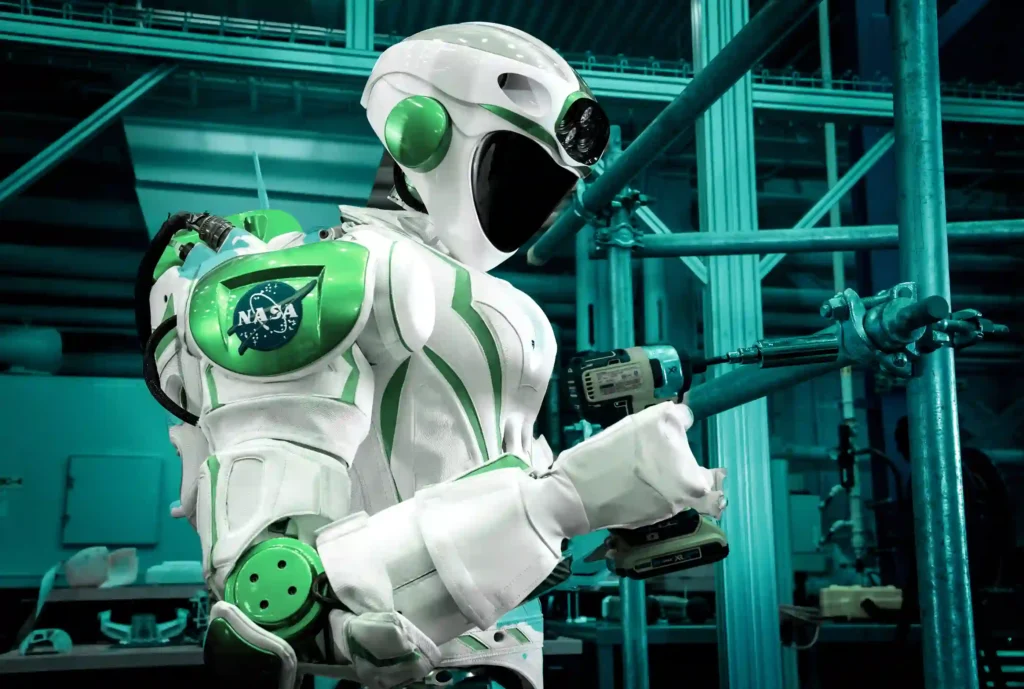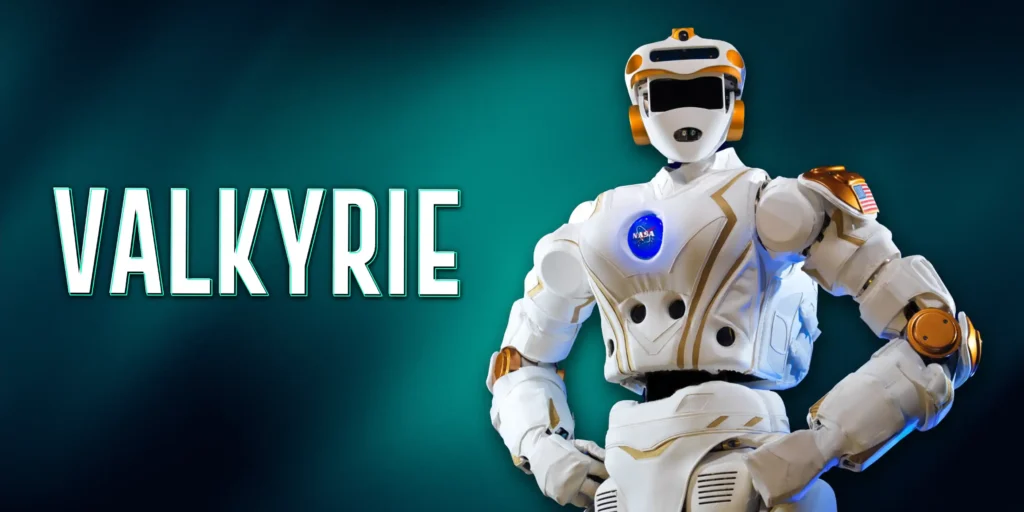The NASA Valkyrie robot is designed with advanced capabilities that allow it to perform tasks typically carried out by human astronauts. With its humanoid form and dexterous limbs, this robot possesses the ability to navigate complex environments, manipulate objects, and interact with its surroundings in a manner akin to humans.
Introduction
In the exciting news of space exploration, NASA has recently developed a groundbreaking innovation known as ‘Valkyrie‘ – the next generation of robotic astronauts. This humanoid robot represents a significant leap forward in NASA’s robotics technology, as it aims to revolutionize space exploration and the way for human-like robots to assist in future space missions.
The development of this humanoid astronaut robot opens new possibilities for space exploration. By sending robots like Valkyrie into space instead of humans, NASA can mitigate potential risks and challenges associated with human presence in extreme conditions. These robots can be deployed on missions that are too dangerous or inaccessible for humans, allowing us to gather valuable data and expand our understanding of the cosmos.

This robot serves as a platform for testing various technologies and systems that will be crucial for future manned missions. By refining these robotic capabilities through extensive research and development, NASA is laying the foundation for safer and more efficient human space travel.
The emergence of Valkyrie marks an exciting milestone in NASA’s pursuit of advanced robotics technology for space exploration. As we continue to push boundaries beyond Earth’s atmosphere, humanoid astronaut robots like this robot will play a vital role in expanding our knowledge of the universe while ensuring the safety and success of future missions.
The Capabilities and Features of ‘Valkyrie‘
Valkyrie, the humanoid robot developed by NASA, represents a new era in space robotics with its impressive capabilities and features. Designed specifically for space exploration, this robot combines advanced technology and human-like characteristics to perform a variety of tasks in extra-terrestrial environments.
One of the key features of this robot is its humanoid design. With a height of 6 feet and weighing around 300 pounds, it closely resembles the human form. This allows it to navigate and interact with its surroundings in a way that traditional robots cannot. Its dexterous hands enable it to manipulate objects with precision, making it an invaluable asset for complex tasks on future space missions.
In terms of capabilities, this robot is equipped with state-of-the-art sensors and cameras that provide it with enhanced perception and situational awareness. This enables the robot to autonomously navigate through challenging terrains while avoiding obstacles. Additionally, Valkyrie‘s advanced control systems allow for smooth and coordinated movements, ensuring efficient execution of tasks.
NASA’s advancements in robotics have paved the way for humanoid robots like Valkyrie to play a significant role in space exploration. These robots have the potential to assist astronauts during extravehicular activities (EVAs), perform maintenance tasks on spacecraft or planetary surfaces, and even act as explorers themselves in environments too hazardous for humans.
The development of Valkyrie represents a major leap forward in our ability to explore space more effectively and safely. As technology continues to advance, we can expect even more sophisticated humanoid robots like this robot to contribute significantly to future missions beyond Earth’s atmosphere.
Applications of ‘Valkyrie‘ in Future Space Missions and Beyond
The humanoid robot known as ‘Valkyrie‘ has garnered significant attention in the field of space exploration due to its potential applications in future missions and beyond. Designed to perform tasks that would otherwise be challenging or dangerous for human astronauts, this robot holds great promise for advancing our understanding of the universe and enabling us to explore distant planets.
One of the key applications of this robot lies in its ability to undertake robotic astronaut tasks. These include conducting repairs, maintenance, and experiments in space environments where human presence may be limited or impractical. By delegating these tasks to humanoid robots like Valkyrie, we can ensure the safety and efficiency of space missions while reducing risks associated with human involvement.
Valkyrie‘s role in planetary colonization cannot be overlooked. As we venture towards establishing permanent settlements on other planets, humanoid robots like this robot can play a crucial role in preparing habitats, constructing infrastructure, and assisting with various tasks required for sustaining life on alien worlds. Their dexterity and adaptability make them valuable assets in overcoming the challenges associated with planetary colonization.
Deep space exploration holds immense potential with humanoid robots like Valkyrie leading the way. With their advanced mobility systems and artificial intelligence capabilities, these robots can navigate treacherous terrains and conduct scientific experiments in environments that are inhospitable or inaccessible to humans. The data collected by these robotic explorers can provide invaluable insights into celestial bodies far beyond our reach.
The applications of Valkyrie in future space missions extend from performing robotic astronaut tasks to facilitating planetary colonization efforts and enabling deep space exploration. As technology continues to advance, it is evident that humanoid robots will play an increasingly vital role in expanding our knowledge of the cosmos and pushing the boundaries of human exploration further than ever before.
The Challenges and Innovations Behind Developing the ‘Valkyrie‘ Robot
The development of NASA’s Valkyrie robot has been a remarkable journey filled with challenges and innovative solutions. As one of the most advanced humanoid robots, this robot aims to assist humans in various tasks, including space exploration and disaster response.
One of the main challenges faced during the development process was overcoming technical hurdles in humanoid robotics. Creating a robot that can mimic human movements and interact with its surroundings requires intricate engineering and sophisticated control systems. Engineers had to tackle issues such as balance, dexterity, and power consumption to ensure Valkyrie could perform tasks effectively.
Another key area of innovation in the development of this robot is robotic exoskeleton technology. The integration of exoskeletons allows for enhanced strength and endurance, enabling the robot to perform physically demanding tasks with ease. Advancements in materials science and control algorithms have played a crucial role in improving the efficiency and capabilities of these exoskeletons.
Valkyrie‘s design incorporates cutting-edge sensors and perception systems that enable it to navigate complex environments autonomously. This includes features like depth cameras, LIDAR sensors, and advanced algorithms for mapping and object recognition. These innovations not only enhance the robot’s ability to interact with its surroundings but also contribute to its overall safety during operation.
The continuous advancements made in developing Valkyrie highlight the dedication of researchers and engineers toward pushing the boundaries of robotics technology. By overcoming technical challenges and incorporating innovative solutions such as robotic exoskeletons, NASA’s this robot represents a significant milestone in humanoid robotics research that holds immense potential for future applications in space exploration, disaster response, and beyond.
How ‘Valkyrie‘ Could Revolutionize Space Travel and Beyond
The development of advanced robotics technology, such as the humanoid robot ‘Valkyrie‘, holds immense potential for revolutionizing space travel and exploration. As we look towards future missions to Mars and beyond, the integration of robots with human astronauts could have far-reaching implications.
One key aspect is the potential impact that Valkyrie and similar robots could have on future missions to Mars. These robots can be designed to perform tasks that are either too dangerous or too time-consuming for human astronauts. They can assist in setting up habitats, conducting experiments, and even exploring hazardous terrains before human arrival. This not only reduces risks for astronauts but also allows for more efficient mission planning and execution.
The integration of robots like this robot opens new possibilities for human-robot collaboration in space exploration. By working together, humans and robots can leverage their respective strengths to overcome challenges and achieve scientific breakthroughs. Robots can provide assistance during extravehicular activities (EVAs), collect data from remote locations, or even act as companions for long-duration missions.
The implications of this collaboration extend beyond space travel. The advancements made in human-robot interaction and cooperation in space exploration can also find applications here on Earth. The knowledge gained from developing systems that enable seamless communication between humans and robots can be utilized in various industries such as healthcare, manufacturing, disaster response, and more.
The development of humanoid robots like Valkyrie has the potential to revolutionize space travel by enhancing future missions to Mars and beyond. The integration of these robots with human astronauts opens up new avenues for exploration while ensuring safety and efficiency.
The implications go beyond space exploration itself as they pave the way for advancements in human-robot collaboration across various industries here on Earth.
